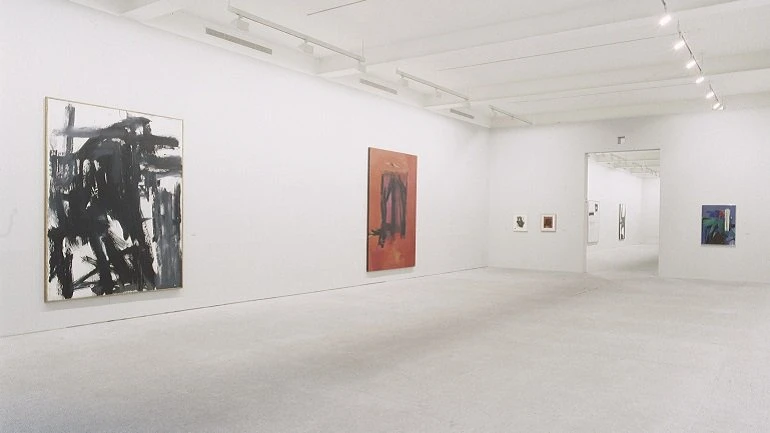Franz Kline. Arte y estructura de la identidad

Kline's confrontation with his artistic environment, exhibition and criticism is taken as a starting point and we see that in the late Forties he acquires modern language and approaches expressionism as a training period, not as the beginning of language, according to Foster. That is, Kline does not privilege the act or practice of painting as a cathartic exercise, so that the ego of the artist is freed from the yoke of rational consciousness. On the contrary, and without falling into the painting of subjects, colour (defined as the constructive tension of two energies) dominates his work. Moreover, the existence of draft sketches and drawings and his obsession with what he calls closing the angles denotes the control exercised over the design and composition of his paintings.
The turn of the decade, which coincides with his first individual exhibition (Egan Gallery, New York, 1950), reveals the acquisition of his own language and the start of his experimental phase by reducing the palette to black and white. At this point, the exhibition aims to eradicate stereotypes that pervert a correct reading of Kline’s work, such as the calligraphic interpretation of paintings sustained by chromatic and spatial tensions between white and black, as in Third Avenue (1954) and Sabro (1956). Foster concludes that his "style" and his historiographical destiny are not valid terms "to explain the radicalism of Kline‘s Art"; by contrast, he proposes that in his circumstances and in his particular understanding of the practice of painting - which run counter to, on many points, the dominant and then considered modern painting - are the answers to elaborate on his art and identity.
Fundació Antoni Tàpies, Barcelona (March, 18 - June 5, 1994); Whitechapel Art Gallery, London (July 8 - September 11, 1994); Saarland Museum, Saarbrücken, Germany (December 11, 1994 - February 5, 1995)
Organised by
Fundació Antoni Tàpies, Barcelona, in collaboration with Museo Nacional Centro de Arte Reina Sofía
Image gallery

Itinerary
Fundació Antoni Tàpies, Barcelona
18 March, 1994 - 5 June, 1994
Whitechapel Art Gallery, Londres
8 July, 1994 - 11 September, 1994
Museo Nacional Centro de Arte Reina Sofía
27 September, 1994 - 21 November, 1994
Saarland Museum, Saarbrücken
11 December, 1994 - 5 February, 1995